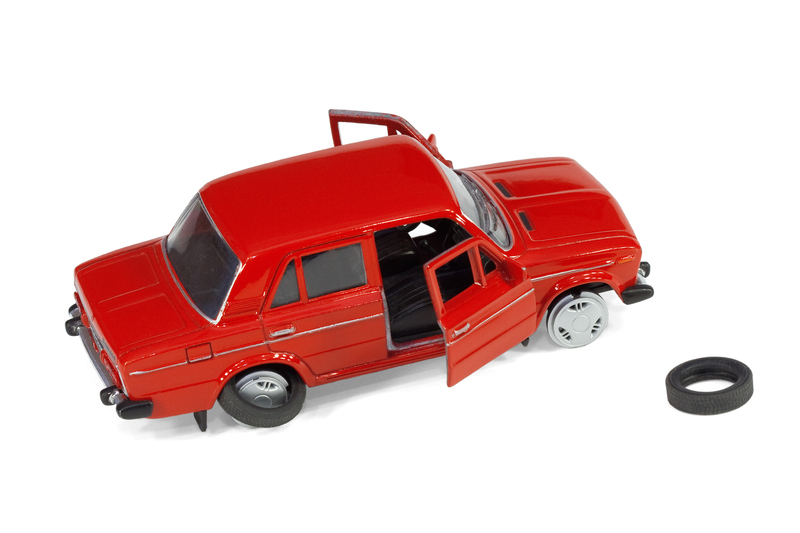Key Approaches to Curtailing Your Plastic Waste
In today's society, plastic pollution poses a significant environmental threat. Every year, millions of tons of plastic end up in landfills, waterways, and oceans. This not only harms marine life but also enters our food chain, affecting human health. The urge to find sustainable alternatives and reduce plastic usage is stronger than ever. This comprehensive guide delves deep into the best approaches to cut down your plastic waste effectively and create a greener planet for future generations.

Why Is Reducing Plastic Waste Crucial?
Reducing plastic waste is not just a trend--it's a necessity for preserving the health of our planet. Plastic, especially single-use varieties, can take hundreds or even thousands of years to decompose. During this time, it breaks into microplastics that contaminate water and soil, disrupt ecosystems, and threaten wildlife. Plastics have also been linked to various health risks in humans due to toxins leaching into food and beverages.
- Environmental Preservation: Less plastic waste means healthier oceans, rivers, and landscapes.
- Wildlife Protection: Reducing plastic waste prevents animals from ingesting harmful plastics.
- Improved Human Health: Limiting plastic exposure reduces the risk of toxic chemicals entering our bodies.
- Resource Conservation: Fewer plastics mean less dependency on fossil fuels used to make them.
Effective Strategies to Reduce Your Plastic Waste
1. Switch to Reusable Alternatives
One of the simplest yet highly impactful ways to curtail plastic waste is to embrace reusable products. By replacing disposables with reusables in your daily life, you significantly reduce the number of single-use plastics ending up in landfills.
- Reusable Bags: Carry cloth or sturdy shopping bags instead of single-use plastic bags.
- Water Bottles: Invest in a stainless steel or glass water bottle to eliminate disposable plastic bottles.
- Food Containers: Opt for glass, metal, or silicone containers for storing leftovers and lunches.
- Coffee Cups: Bring your own travel mug to coffee shops and say no to plastic lids.
- Straws and Cutlery: Use bamboo or metal straws and a set of reusable utensils.
2. Choose Bulk and Loose Products
A considerable amount of plastic waste comes from packaging. One powerful method to reduce plastic packaging waste is to buy in bulk or select loose fruits, vegetables, and pantry staples.
- Bulk Bins: Use your own containers or reusable bags at stores that offer bulk sections for grains, nuts, or spices.
- Avoid Over-Packaged Goods: Opt for products with minimal or no plastic packaging.
- Fresh Produce: Buy loose produce instead of pre-packaged options.
3. Rethink Personal Care and Cleaning Products
*Many common household and personal care items come in plastic. Simple switches make a profound difference in* cutting down household plastic waste:
- Bar Soaps: Replace liquid soaps in plastic bottles with traditional bar soaps.
- Shampoo Bars: Try solid shampoo bars, often wrapped in paper instead of bottles.
- Bamboo Toothbrushes: Use toothbrushes made from sustainable materials instead of plastic ones.
- DIY Cleaners: Make homemade cleaning solutions and keep them in reusable glass bottles.
4. Practice Responsible Recycling
While recycling alone isn't the solution, it's vital to properly recycle plastic waste to prevent contamination and ensure plastics can be reused effectively.
- Know Local Rules: Learn your area's recycling guidelines to avoid wish-cycling (putting non-recyclables in the recycling bin).
- Clean Before Recycle: Rinse containers to prevent food residue from contaminating the recycling stream.
- Check Symbols: Only recycle items marked with locally accepted recycling symbols.
5. Avoid Single-Use Plastics Whenever Possible
Single-use plastics account for a massive share of global waste. Take proactive steps to minimize usage of disposable plastic items:
- Say No to Plastic Straws and Cutlery: Decline them at restaurants or fast-food outlets.
- Opt for Refill Stations: Use refill stations for water, cleaning supplies, and even some food items.
- Cater Events Sustainably: Choose compostable or reusable serveware and decorations.
6. Support Plastic-Free Brands and Local Businesses
Make a difference by intentionally supporting brands and local shops that prioritize sustainable, plastic-free packaging.
- Look for Eco-Friendly Labels: Seek out brands that use recyclable, compostable, or minimal packaging.
- Shop at Farmers' Markets: Local markets typically have produce and goods with less packaging compared to big box stores.
7. Get Creative with Repurposing and Upcycling
Before disposing of plastic items, consider whether they can be reused or upcycled. Creative repurposing delays their entry into the waste stream:
- Arts and Crafts: Plastic containers can become plant pots, organizers, or art supplies.
- DIY Projects: Use old bottles for homemade bird feeders, watering cans, or storage.
- Kids' Projects: Engage children in creative reuse to teach sustainability from a young age.
8. Educate and Advocate
Individual choices matter, but collective action can spark more significant change. Encourage friends, family, and your community to embrace strategies to reduce plastic use:
- Host Awareness Campaigns: Organize community cleanups and educational events.
- Engage Local Leaders: Petition for policy changes or bans on single-use plastics in your area.
- Share Knowledge: Use social media to spread tips and resources.
Plastic Waste Reduction in Various Life Spheres
Reducing Plastic Waste at Home
- Transition to reusable food wraps instead of plastic wrap.
- Buy milk, juices, or sauces in glass bottles when possible.
- Use a shopping checklist to avoid impulse purchases of packaged items.
- Compost organic waste to reduce trash bags required.
Lowering Plastic Waste at School and Work
- Bring your own lunch box and drink bottle daily.
- Advocate for bulk snacks and reusable dishware in the cafeteria.
- Set up recycling bins and clear educational signage.
Reducing Plastic Waste On-the-Go
- Keep a reusable utensil set, napkin, and straw in your bag.
- Ask for takeout orders in your own containers, if allowed.
- Choose street food vendors who serve in paper or compostable containers.
Common Barriers and How to Overcome Them
Despite growing awareness, it can be challenging to significantly reduce your plastic waste due to convenience, availability, and cost factors. Here's how to tackle these barriers:
- Convenience: Prepare ahead. Keep reusables ready in your car, backpack, or workspace.
- Availability: Seek out specialty stores, bulk shops, and online resources for plastic-free goods.
- Cost: Remember, although reusable products may cost more upfront, they save money over time by eliminating the need for constant repurchases.
- Habit Change: Set small, realistic goals--swap one plastic item at a time rather than overhauling overnight.
Emerging Innovations in Plastic Waste Minimization
The fight against plastic waste is also technological. Across the globe, innovators are creating new materials and systems to reduce global plastic waste generation:
- Biodegradable Plastics: Made from plant-based materials that break down more easily than conventional plastics.
- Edible Packaging: Films made from seaweed, rice, or other food-safe ingredients.
- Recycling Advancements: New facilities and processes make it easier to recycle complex plastics.
- Deposit-Return Schemes: Refunds incentivize returning bottles and containers for reuse.
The Role of Policy and Corporate Responsibility
While individual actions are powerful, policy change and corporate action are essential for a plastic-free future. Governments worldwide are introducing bans, taxes, and regulations to curb plastic use. Simultaneously, forward-thinking businesses are switching to circular packaging, embracing extended producer responsibility, and investing in sustainable materials.
- Plastic Bag Bans: Many cities and countries have banned or taxed single-use plastic bags, leading to dramatic reductions in usage.
- Corporate Pledges: Some major brands aim to make 100% of their packaging recyclable or compostable by 2025 or sooner.
- Retailer Initiatives: Supermarkets offer plastic-free aisles and encourage shoppers to bring their own containers.

Measuring Your Plastic Footprint
To truly curtail your personal plastic waste, it helps to track where your contributions come from. Numerous online tools and plastic calculators allow you to analyze your plastic habits, set targets, and measure improvement over time.
- Track your weekly or monthly waste output--even taking photos of what goes into your trash or recycling can clarify patterns and inspire change.
- Join community challenges or pledges to stay motivated and share your journey with others.
Conclusion: Start Your Journey to Less Plastic Today
Plastic waste reduction is an ongoing process, made easier by thoughtful changes supported by innovation, policy, and collective action. By making mindful swaps, advocating for sustainable solutions, and supporting responsible businesses, every individual can contribute to the global fight against plastic pollution.
Underline your commitment to a healthier world--take real steps to reduce your plastic waste today. Even the smallest changes, when taken together, spark major transformation. Make your choices count for the environment, for wildlife, and for future generations.
For more resources on sustainable living, responsible consumer habits, and updates on cutting down plastic waste worldwide, stay connected and inspired to keep building a greener tomorrow.